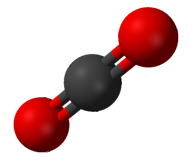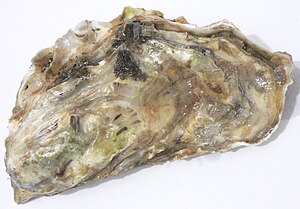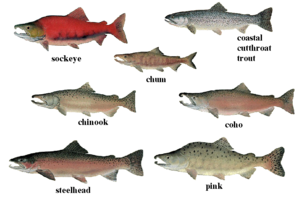Chris Ninnes took up his position as CEO of the Aquaculture Stewardship Council (ASC) in October 2011. Before joining the ASC, he worked for the Marine Stewardship Council (MSC) as deputy chief executive and director of operations where he managed the European, American and Asia-Pacific commercial teams and the standards team in the UK. Ninnes has also been active within ISEAL since 2005 in the role of vice chair and member of the executive committee of the Board and the finance committee.
This interview appeared in the July August edition of
International Aquafeed magazine
Where does the need for certification stem from?
Aquaculture is currently the fastest growing food production system in the world. However, as the aquaculture sector expands so does its footprint on the environment and society.
Best practice standards for responsibly farmed seafood can help drive change and promote industry innovation through market-driven incentives. These market incentives drive the broader uptake of best practices within the industry and will ensure it can develop with much reduced negative impacts on the environment and on society.
Voluntary certification only works if the best performers can distinguish themselves from the median, and certification programmes such as the ASC’s recognises and promotes the sale of certified farmed fish through the use of an on-pack logo. Certification is also complementary to public policy initiatives that seek to reduce impacts through regulation and the two approaches are additive. Regulation typically provides a set of requirements that all must comply with and certification promotes broader uptake of innovation that builds on this.
There are many certification programmes, what makes the ASC different?
There are actually relatively few aquaculture certification programmes that have been established to engage with the global industry. There are more programmes that have restricted coverage of species or of geographic scope, but these respond to niche opportunities within an increasingly global market place.
The ASC’s global certification programme encourages the use of best practices to reduce environmental and social impacts and the coverage of these two areas is extensive. The ASC’s standards focus on farm-based impacts and the connections that farm practices have on broader environmental impacts linked to how feed is sourced and how water is conserved. They do not cover directly food safety or animal welfare issues, which other aquaculture standards do.
The ASC has recently signed a memorandum of understanding (MoU) with GLOBALG.A.P and GAA. What are reasons for doing this?
Yes, this is a very exciting development for ASC as well as for our shared customers. ASC, GAA and GLOBALG.A.P. collectively believe that we can improve the value and efficiency of our certification programmes by collaborating on the initiatives identified in the MoU. By working together we can achieve our mutual goal more efficiently - that is to support, recognise and promote a more sustainable aquaculture industry.
How is feed covered by ASC standards?
Feed is widely covered in all our species-specific standards and broadly they address the sourcing of ingredients and the efficiency of feed use. The next step will be to combine what has already been developed through the Dialogues into a more consistent ‘ask’ towards the feed producing sector.
The ASC also seeks to engage other aquaculture programmes in the development of a common approach to feed. This will not necessarily mean we will have the same demands, but these demands will be developed from a common framework that will also ease the burden of supplying responsibly sourced feed to the aquaculture industry.
What role can the feed industry play in ensuring responsible aquaculture?
Feed is the most costly input in fish farming. This in itself has driven innovation in feed composition and increased efficiency of use. The production and use of feed represent a major part of the environmental impact of aquaculture. The capture of fish to produce meal and fish oil, land-based production of soy beans and oil palms, the largely unknown impact of other key ingredients and the impacts from the fishing and farming operations themselves all contribute to the environmental footprint of feed production.
There are many steps that can be taken to improve the profile of these raw materials. Starting from knowing where and how they are produced, to seek improvements in their production methods through to demands that the raw material producers themselves credibly demonstrate that their products are produced sustainably.
Can you tell us about the Responsible Feed Project?
The Responsible Feed Project will create a new, globally applicable, ASC Feed Standard. The Standard will set out requirements for the aquaculture feed industry to operate on a more environmentally sound and socially responsible basis. The project will introduce a higher level of consistency into the way in which the aquaculture feed industry has been asked to address sustainability and social responsibility issues concerning feed.
After finalisation of this work, the ASC Feed Standard will be available to all who want to use it. I believe this approach is optimal for improving the environmental performance of the feed component of fish farming and for developing a cohesive and consistent tool on behalf of the broader aquaculture industry.
How can feed producers get involved with the ASC?
We actively encourage aquaculture feed producers of all sizes and nations to participate in the Responsible Feed Project. This could be through their involvement with the Technical Working Group, or by submitting formal comments as the drafts of the Standard are made available for public review.
We will also be seeking the support of feed manufacturers to take part in the pilot tests of the Feed Standard; which are expected to start by mid 2014. Furthermore, producers who would like to receive regular status updates can sign up for the Feed Project Newsletter. To subscribe or for more information about the Feed Standards Project, please contact Michiel Fransen michiel.fransen@asc-aqua.org.
































